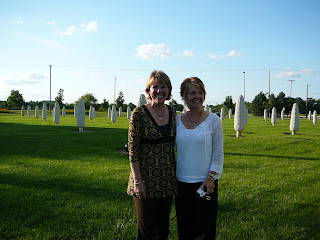 Mines of the Minotaur
Mines of the Minotaurby Julia Golding
Marshall Cavendish, May 2008
Review copy compliments of the publisher
Last summer I reviewed the first two books in this quartet,
Secret of the Sirens and
The Gorgon's Gaze.
Luckily, this week I had some airport and airplane time with all the requisite delays and reading opportunities. I gave myself permission to bring the books I WANTED to read rather than the ones I NEEDED to read. Work will wait.
Mines of the Minotaur opens with Connie Lionheart, the only universal companion in the Society for the Protection of Mythical Creatures, calling up a dangerous and violent storm. She's not doing this on her own. She suspects that her dark companion, Kullervo, is responsible.
Running from this dark side of herself takes Connie into the mines near her town and into the world of a damaged Minotaur and other damaged mythical creatures who are in hiding.
Connie must explore and learn to accept all the parts of herself, even the dark and angry and dangerous ones, in order to become whole, heal the damaged creatures, and lead the society.
The society, in turn, must learn to trust and accept Connie and work together with her rather than fear and shun her.
In a subplot that mirrors the hard decisions that Connie and the society are making, the non-society humans in Connie's neighborhood debate, accept, and erect a wind farm to capture the ocean breezes as an alternative energy source.
At the
Companions Club website I took the Companion Assessment Test and learned that I am a member of the Company of Winged Creatures.
"Congratulations, you are a member of the Company of Winged Creatures. All of us in this company love to take flight. As a High Flyer you will be mixing with creatures as dangerous as the sirens, or as miraculous as the phoenix. Only the most intrepid are selected to join us, so get ready for take off!" After answering a few more questions, I learned that
"You have been chosen as a companion to the great eagles. A remnant of the forebears of our everyday eagles, these huge birds nest as far from humankind as possible. Masters of flight, they are so big that a person can ride on their backs or be carried in their claws. But beware: they can be cruel and deadly. Be cunning in all your dealings with your companion."And at
Julia Golding's website, I see that the final (her fans hope not) book in the quartet is out in the UK.
 Moon over Long Island Sound, as seen from Abbotts' Lobster in the Rough in Noank, CT.
Moon over Long Island Sound, as seen from Abbotts' Lobster in the Rough in Noank, CT.
















